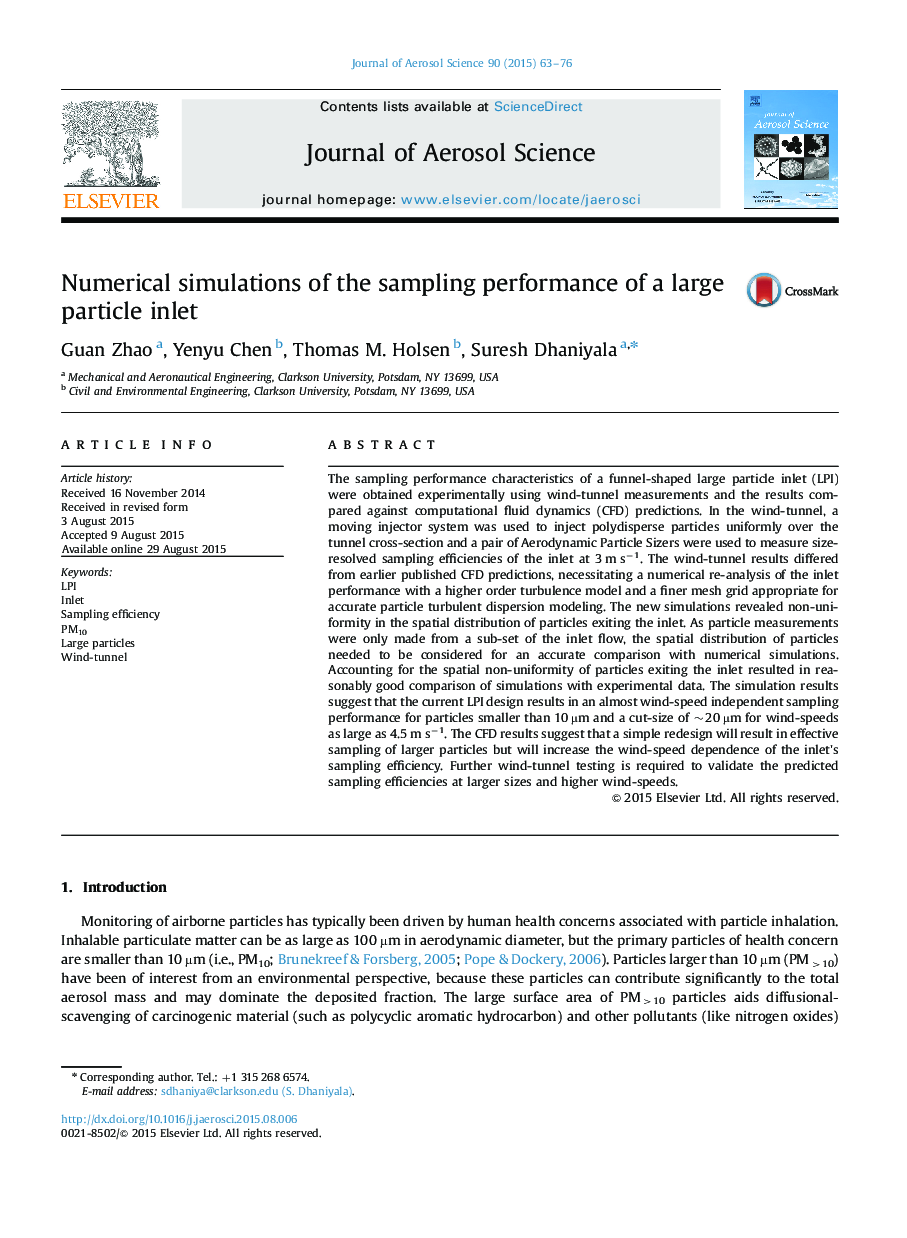| Article ID | Journal | Published Year | Pages | File Type |
|---|---|---|---|---|
| 6344383 | Journal of Aerosol Science | 2015 | 14 Pages |
â¢Size-dependent sampling performance of large particle inlet (LPI) established from wind-tunnel results.â¢Experimental results validated with computational fluid dynamics calculations.â¢Particles as large as 40-50 μm can be sampled with the LPI.â¢The LPI has a wind speed-independent sampling efficiency for particles smaller than ~10 μm, with some wind-speed dependence for larger particles.
The sampling performance characteristics of a funnel-shaped large particle inlet (LPI) were obtained experimentally using wind-tunnel measurements and the results compared against computational fluid dynamics (CFD) predictions. In the wind-tunnel, a moving injector system was used to inject polydisperse particles uniformly over the tunnel cross-section and a pair of Aerodynamic Particle Sizers were used to measure size-resolved sampling efficiencies of the inlet at 3 m sâ1. The wind-tunnel results differed from earlier published CFD predictions, necessitating a numerical re-analysis of the inlet performance with a higher order turbulence model and a finer mesh grid appropriate for accurate particle turbulent dispersion modeling. The new simulations revealed non-uniformity in the spatial distribution of particles exiting the inlet. As particle measurements were only made from a sub-set of the inlet flow, the spatial distribution of particles needed to be considered for an accurate comparison with numerical simulations. Accounting for the spatial non-uniformity of particles exiting the inlet resulted in reasonably good comparison of simulations with experimental data. The simulation results suggest that the current LPI design results in an almost wind-speed independent sampling performance for particles smaller than 10 µm and a cut-size of ~20 µm for wind-speeds as large as 4.5 m sâ1. The CFD results suggest that a simple redesign will result in effective sampling of larger particles but will increase the wind-speed dependence of the inlet's sampling efficiency. Further wind-tunnel testing is required to validate the predicted sampling efficiencies at larger sizes and higher wind-speeds.
